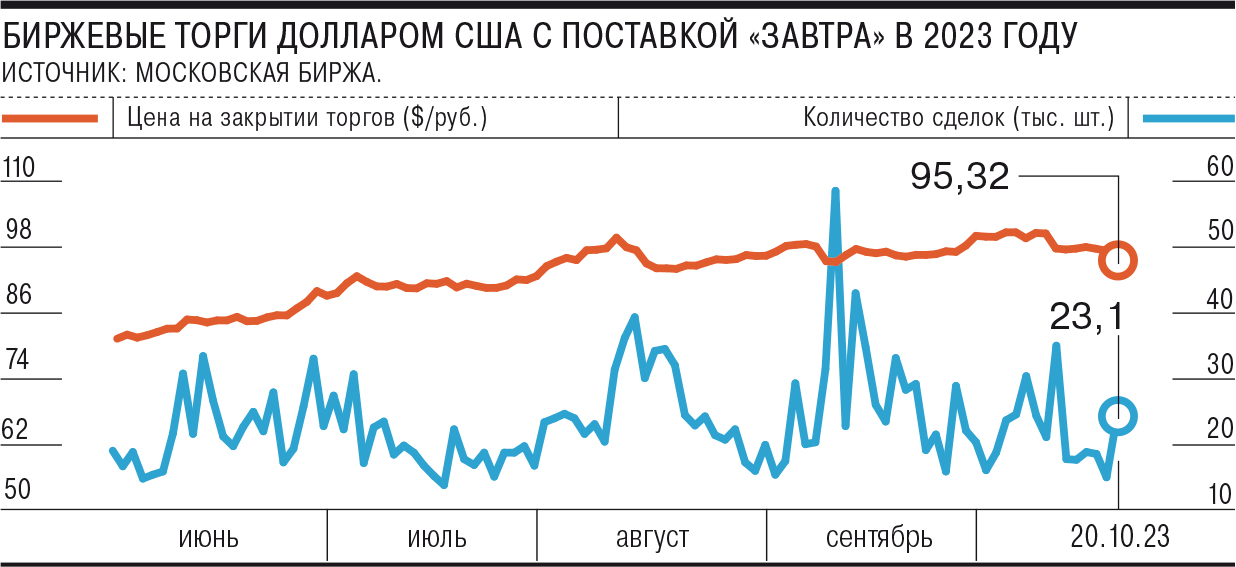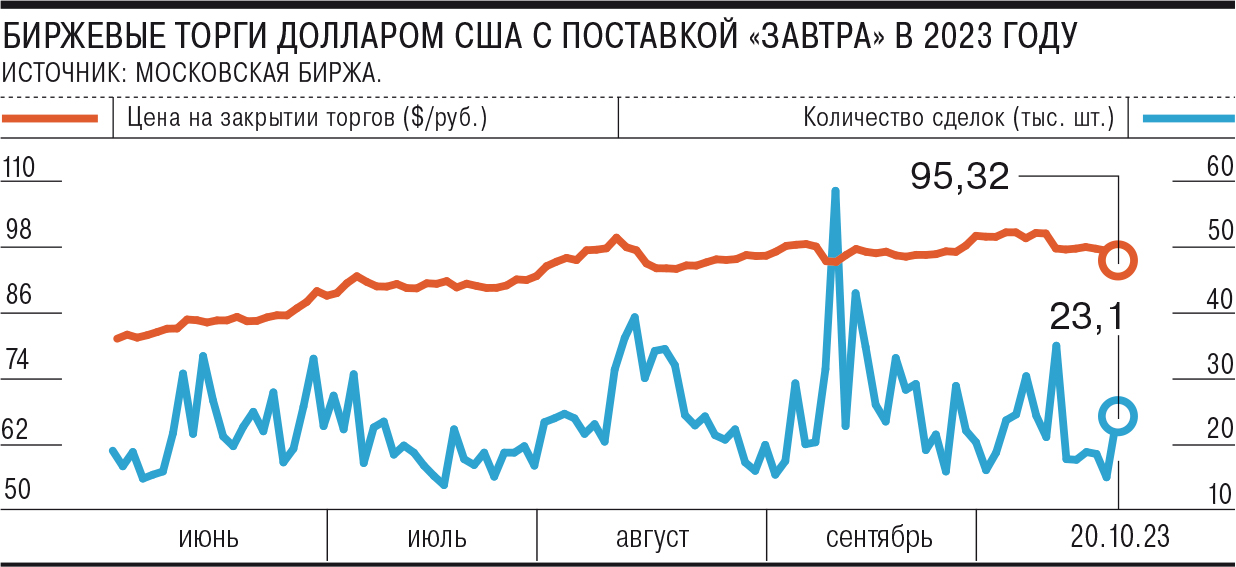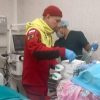The ruble support measures announced by the authorities not only returned the ruble exchange rate to a five-week minimum, to 95.32 rubles/$, but also reduced speculative activity on the stock exchange. This is evidenced by trading data and observations of market participants. As a result, the average size of a dollar transaction on the Moscow Exchange exceeded 5 thousand rubles for the first time in a year and a half, and the number of transactions fell by 30%.
On Friday, the dollar exchange rate at exchange trading on the Moscow Exchange fell below 96 rubles/$ for the first time in a month. During the main trading session, the rate reached 95.2 rubles/$, the minimum since September 13. At the close of trading, it stabilized around the level of 95.32 rubles/$, which is 1.73 rubles. below Thursday’s closing values and by 1.92 rubles. below the previous Friday's close. The euro exchange rate decreased by 1.95 rubles during the day, to 100.8525 rubles/€, having lost 1.32 rubles over the week. The yuan lost 22 kopecks in value during the day. and almost 31 kopecks. since the beginning of the week, consolidating near the level of 13 rubles/CNY.


The rollback from local highs occurred with decreased investor activity. The volume of trading in dollars with delivery “tomorrow” amounted to almost 450 billion rubles during the week, which is 150 billion rubles. less than the previous week. Yuan trading volume reached RUB 662 billion, having decreased by RUB 116 billion over the week. In euros, trading volume decreased by 20 billion rubles, to 180 billion rubles.
In the American currency, the decrease in activity was primarily due to speculatively minded private investors, as evidenced by the decrease in the number transactions and growth in the size of the average transaction.
Last week, there were an average of fewer than 18 thousand transactions per day in the dollar, which is almost 30% lower than the previous week and the lowest level since July. “Usually speculative or algorithmic trading requires a large number of corrective transactions with a small volume,” notes Vladimir Evstifeev, head of the analytical department of Zenit Bank. As a result, the average transaction size exceeded 5 thousand rubles for the first time in a year and a half; in the summer months it averaged 4.2 thousand rubles.
Analysts attribute the strengthening of the ruble and the decrease in the activity of speculators to the authorities’ announcement of parameters for the sale of foreign currency earnings by exporters from 43 groups of companies (see Kommersant on October 20). Before the announcement of these measures, as noted by Sovcombank chief analyst Mikhail Vasiliev, the ruble had been weakening for ten and a half months in a row, and this provoked speculative players to only buy dollars. Now the authorities have shown that they will strive to keep the ruble below the 100 ruble/$ mark through various administrative measures, and further play on the weakening of the ruble looks risky. As Polina Khvoinitskaya, head of investment strategy and analytics at Expobank, notes, many market participants have taken a wait-and-see approach. “It is still difficult to assess the effect of these measures, so some market participants have taken profits on currency positions and are waiting,” notes Ms. Khvoynitskaya.
In the current market conditions, analysts expect further strengthening of the ruble.< /p>
In this case, as in a similar situation in the spring of 2022, speculators may become more active and support the trend towards a strengthening of the ruble. “Speculators may perk up if the ruble steadily strengthens towards 90 per dollar or if a new understandable and stable range is formed (for example, 90–100 or 95–100 per dollar),” says Mikhail Vasiliev. According to Vladimir Evstifeev, the prerequisites for a reversal of speculative strategies include the approaching large tax payments and rising oil prices. Therefore, he is waiting for the dollar exchange rate to return to the range of 92–95 rubles/$.






















































Свежие комментарии